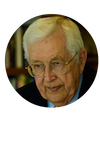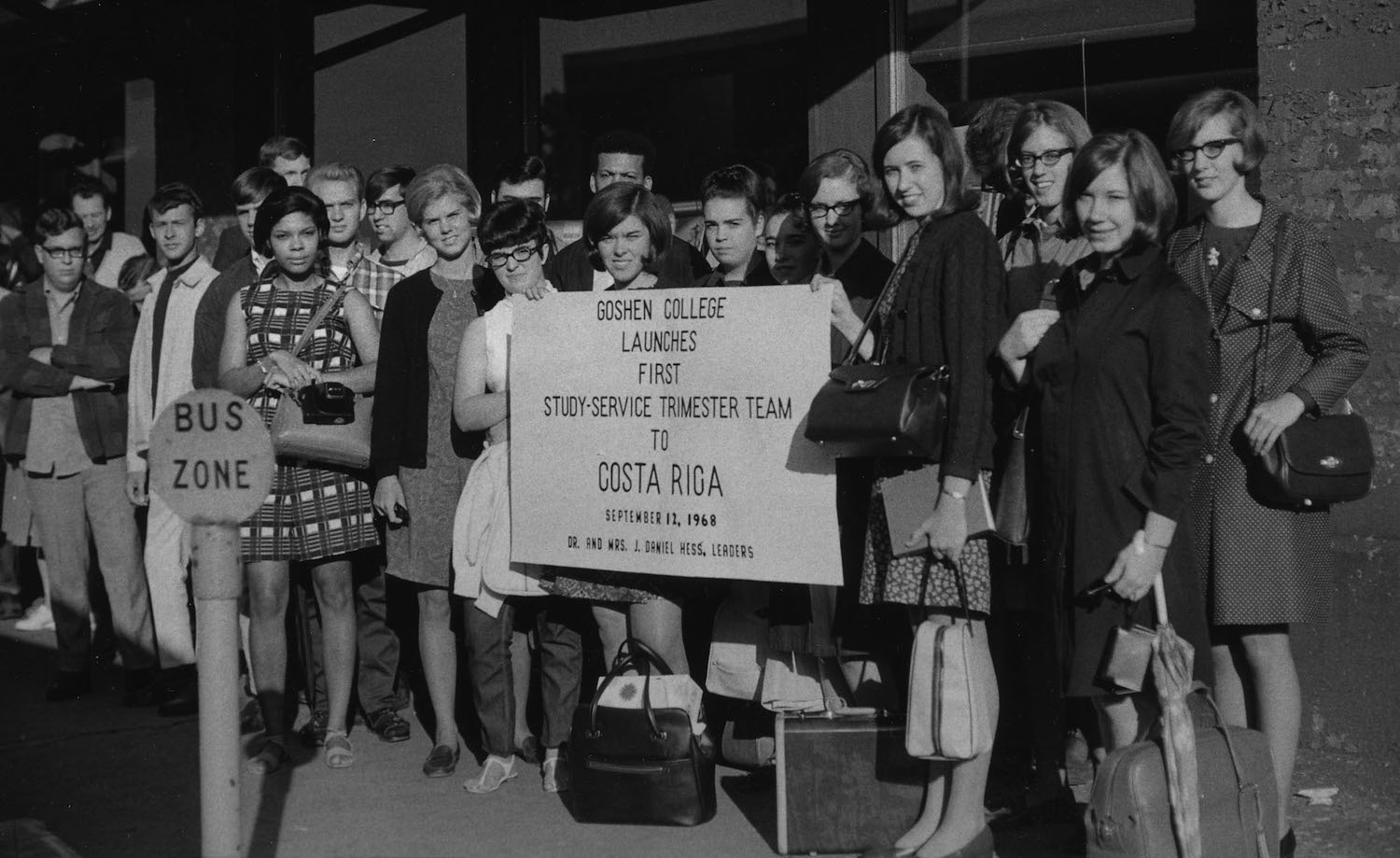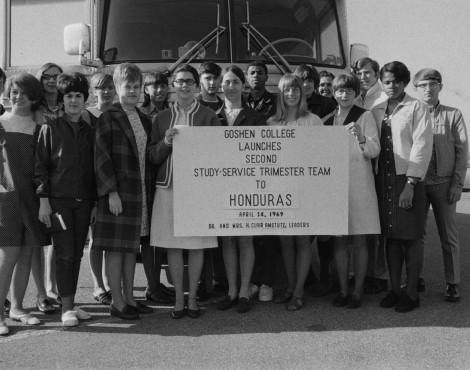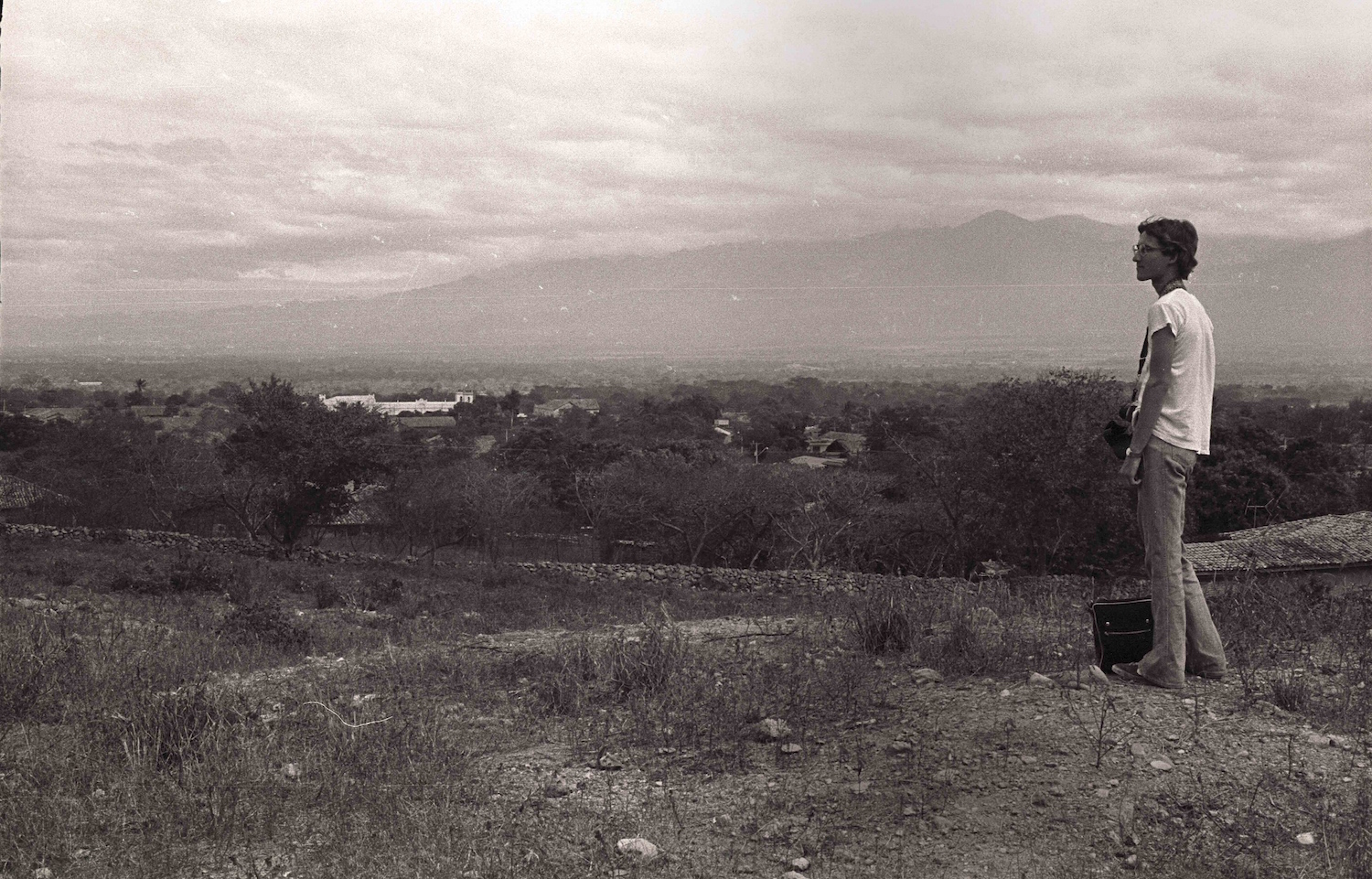The Early Years series will offer a glimpse into SST’s rich history through interviews with key players in SST’s creation and beginning decades. For the first installment, we spoke with Henry (Hank) Weaver of Goshen, who served on the planning committee for SST.
Hank Weaver’s game was chemistry. It was his love, his research, what he taught at Eastern Mennonite College and Goshen College, and the spark that sent him to Peru in 1964 as a consultant at San Marcos University in Lima. When he returned to Goshen from a year of teaching in very bad Spanish and Lima’s grey humidity, his passion was still chemistry. But now he could not stop thinking about the world.
There were no international programs at GC, save for an annual trip to Europe with the Council of Mennonite Colleges. Weaver, who was working with the council, wanted students to experience third world countries.
Enrollment was down. Expenses were high. President Paul Miniger, who as a professor had walked across campus looking at his shoes, became the driving force behind the creation of an international program. He appointed Weaver as secretary for a committee formed on the future of the college. Where did GC want to be in 50 years?
It was 1965. By the second meeting, the dozen professors convened decided an international component was a key change. Many in the room – Carl Kreider, Dan Hess – had the desire to live abroad. Every Monday for two hours, with Miniger as chair, the group laid out plans to spread across the globe – a general education requirement of one trimester with an emphasis on third world countries.
“We wanted to have an answer for every possible problem. Every question that was raised by faculty,” Weaver said. “At the end of the second school year, the faculty took a vote, and it was unanimous. Other schools later tried to do similar things and had professors protesting – but this was an amazing experience of everyone working together.”
Trial units went in 1967 to Haiti and Barbados. Parents raised concerns: were student in locations where they would dance and try alcohol? What kind of changes would the trips bring when they returned?
But the trials were successful. In 1968, SST debuted year-round for the first time. Nearly 50 years later, one of the 12 people responsible for the impetus of SST reflects on the program’s longevity.
You led a unit in Poland in 1975. How was that experience?
Poland was a communist country. The iron curtain was still up, which had a lot of side effects I wasn’t aware of in other SST units. Arlin Hunsberger, who was the current director of SST, and I went over to set up with a university and get PL 480 funds. Poland had loan money they owed the U.S. from World War II, but bonds could also be used via local currency to support U.S. projects. Though we weren’t successful in getting those funds for SST, in our investigation process we spent time in Warsaw.
We got an agreement with the University of Warsaw to work with SST, but also needed approval from the Ministry of Education. One year later, a telegraph came giving permission from the Ministry of Education to work in Warsaw, but by then the university was no longer interested. Then a wire came from the provost at Warsaw Agricultural University. He had heard about SST and wanted us for a personal reason: he learned English from a woman in the Brethren Service Committee who he heard lived in Goshen, and thought if he took us, he might see his old friend again.
Once there, my wife Mary and our children shared an apartment with an elderly lady, because housing was quite scarce there. We knew those students better than any others I ever had. You are not just teaching people chemistry; you’re looking at what it means to be an educated person with a broader perspective, and trying to learn the language, not just technical details.
What are the ripple effects of study abroad?
There’s a very interesting concept about how we learn. In the book I co-authored with Judith Marin and Norman Kauffman [Students abroad, Strangers at Home], there is an explanation in which we have a certain frame of reference we use for our lives, and whenever we have a new experience we go to our frame of reference of what we’re used to life being like. But when we get a piece of information that doesn’t fit, we have to change our frame of reference. When you go abroad, suddenly a lot of things that you thought everybody does, not everybody does. Your frame of reference has to grow. I’ve also worked in study abroad programs for the University of California, and you wouldn’t believe the number of people who come back and say: nothing has changed my life more.
What were some of the difficulties of the program?
The worst part were the four deaths that occurred. The first was a student in Haiti who went into a diabetic coma before she reached the hospital. One student drowned in Costa Rica; one student was shot in Haiti; a faculty leader’s child died of illness. These are horrible things.
Anytime you have loss of life it’s very difficult. Danger is everywhere. Drowning also takes place in the US; a student doing a panty raid on campus slipped and fell and was crippled for rest of his life. How does the danger of being in Lima compare to the danger of being in Chicago?
How have you seen the program change and grow over the years?
We had hoped SST could last 15 years, so I am pleased and surprised that it’s still happening. Fundamentally, not too much has changed. The big issue when we started was cost. We designed the original program in such a way that it ended up saving the college money – the cost was within 1 or 2 percent of the cost of operating a student on campus. The way we kept the cost low was primarily in the Caribbean. We put people on a bus all the way to Florida, then flew them to any of the SST spots. It cost $10 a week less for room and board in the countries we were in. Now the finances are a bit different.
Do you still find time to travel?
Mary has Parkinson’s disease but we continue to travel an awful lot. We’ve gone back to Poland, Bulgaria, New Zealand. You develop friends around the world, and one stays in touch with those. We still exchange Christmas cards.
What sets SST apart from other study abroad programs?
The Council on International Education Exchange incorporates more than 500 other universities, but the emphasis on less-developed countries is not as important. In the early 1970s, only about 5 percent of international education programs were in developing countries, and we set about to improve that. (Editor’s note: The number of students studying abroad increases by about 12% each year, reports the BBC, but the exact percentage of students who go to developing countries isn’t known. The U.S. and China are two of the most common places for foreign exchange.)
The second major factor is the degree to which the students enter into the culture. I’ve seen programs with a professor and students in a hotel in some Italian city, but they don’t really interact with the culture. The genius of the Goshen program is the home stay to see how people really live. People don’t just put their towels on the rack in the evening; they must be hung outside. Service creates a deeper level of interaction. You learn about real lives.
In most other universities, the people that drag their feet on international programs tend to be in science departments. At Goshen the opposite was true; science professors were early leaders. The support that we got from the faculty was incredible. The most frequent comment I heard from former leaders deals with the degree to which they learned to know the students, not just as people in their class – they entered into their whole lives far more.
SST also has a tremendous impact for the rest of your life. For a long time I couldn’t read a newspaper without looking at what countries were in trouble. We were in 30 different countries through my work at the University of California. Every experience I’ve had abroad has broadened me. You just think differently. I find myself thinking as world citizen, not a Virginian. It’s inescapable.
Kate Stoltzfus is co-editor of The SST Stories Project.
 Henry (Hank) Weaver of Goshen is a professor and provost emeritus. He taught chemistry courses before serving as dean and then as provost from 1972-79, and as interim president in 1996. Hank and his wife, Mary, have taught and traveled extensively, including an SST unit to Poland in 1975. After leaving GC, Hank was deputy direction of the Education Abroad Program for the University of California in more than 30 countries. He is the author of various publications, including co-author of the book Students Abroad – Strangers at Home: Education for a Global Society (1992) with Norman Kauffman and Judy Weaver, which includes studies with GC students.
Henry (Hank) Weaver of Goshen is a professor and provost emeritus. He taught chemistry courses before serving as dean and then as provost from 1972-79, and as interim president in 1996. Hank and his wife, Mary, have taught and traveled extensively, including an SST unit to Poland in 1975. After leaving GC, Hank was deputy direction of the Education Abroad Program for the University of California in more than 30 countries. He is the author of various publications, including co-author of the book Students Abroad – Strangers at Home: Education for a Global Society (1992) with Norman Kauffman and Judy Weaver, which includes studies with GC students.



